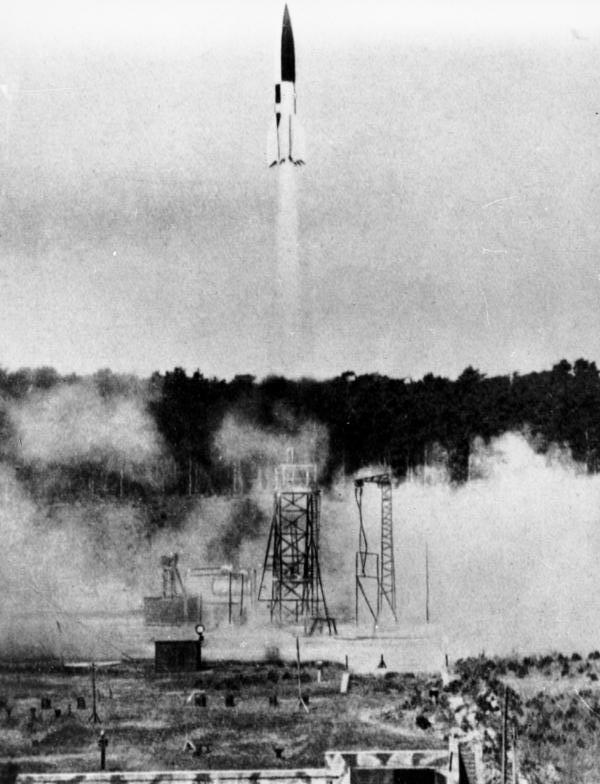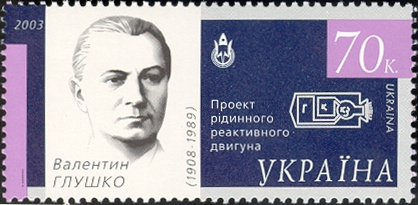|
Institute Rabe
Institut RABE (Missile Construction and Development in Bleicherode, Raketenbau und Entwicklung) was a group of German engineers founded by the Soviets to recreate the A-4 flight control system. It was created in July 1945 in Bleicherode when the Red Army took over Thuringia as part of the Soviet occupation zone. It originally consisted of 12 Germans under Major Boris Chertok and Lieutenant Colonel Aleksey Mikhaylovich Isayev. The ''Institute RABE'' was created with the purpose of recruiting German rocket specialists to aid in current and future Soviet rocket development. This mission had to be kept secret, as the American-occupied territory of Hesse and Bavaria was not far away from Lehesten, the testing site for rocket engines. By the end of August 1945, the institute had settled into their headquarters (the former mansion of Wernher von Braun) but it lacked deeper knowledge of the Peenemünde developments because the US Army had seized a group of 450 specialists in Garmisch-Part ... [...More Info...] [...Related Items...] OR: [Wikipedia] [Google] [Baidu] |
Soviet Union
The Soviet Union,. officially the Union of Soviet Socialist Republics. (USSR),. was a List of former transcontinental countries#Since 1700, transcontinental country that spanned much of Eurasia from 1922 to 1991. A flagship communist state, it was nominally a Federation, federal union of Republics of the Soviet Union, fifteen national republics; in practice, both Government of the Soviet Union, its government and Economy of the Soviet Union, its economy were highly Soviet-type economic planning, centralized until its final years. It was a one-party state governed by the Communist Party of the Soviet Union, with the city of Moscow serving as its capital as well as that of its largest and most populous republic: the Russian Soviet Federative Socialist Republic, Russian SFSR. Other major cities included Saint Petersburg, Leningrad (Russian SFSR), Kyiv, Kiev (Ukrainian Soviet Socialist Republic, Ukrainian SSR), Minsk (Byelorussian Soviet Socialist Republic, Byelorussian SSR), Tas ... [...More Info...] [...Related Items...] OR: [Wikipedia] [Google] [Baidu] |
Sergei Korolev
Sergei Pavlovich Korolev (russian: Сергей Павлович Королёв, Sergey Pavlovich Korolyov, sʲɪrˈɡʲej ˈpavləvʲɪtɕ kərɐˈlʲɵf, Ru-Sergei Pavlovich Korolev.ogg; ukr, Сергій Павлович Корольов, Serhiy Pavlovych Korol'ov, sɛrˈɦij ˈpavlovɪtʃ koroˈlʲou̯) 14 January 1966) was a lead Soviet rocket engineer and spacecraft designer during the Space Race between the United States and the Soviet Union in the 1950s and 1960s. He is regarded by many as the father of practical astronautics. He was involved in the development of the R-7 Rocket, Sputnik 1, launching Laika, Sputnik 3, the first human-made object to make contact with another celestial body, Belka and Strelka, the first human being, Yuri Gagarin, into space, Voskhod 1, and the first person, Alexei Leonov, to conduct a spacewalk. Although Korolev trained as an aircraft designer, his greatest strengths proved to be in design integration, organization and strateg ... [...More Info...] [...Related Items...] OR: [Wikipedia] [Google] [Baidu] |
German Influence On The Soviet Space Program
During World War II Nazi Germany developed rocket technology that was more advanced than that of the Allies and a race commenced between the Soviet Union and the United States to capture and exploit the technology. Soviet rocket specialist were sent to Germany in 1945 to obtain V-2 rockets and worked with German specialists in Germany and later in the Soviet Union to understand and replicate the rocket technology. The involvement of German scientists and engineers was an essential catalyst to early Soviet efforts. In 1945 and 1946 the use of German expertise was invaluable in reducing the time needed to master the intricacies of the V-2 rocket, establishing production of the R-1 rocket and enable a base for further developments. However, after 1947 the Soviets made very little use of German specialists and their influence on the future Soviet space program was marginal. Background During WWII Nazi Germany developed the world's first long range Liquid-propellant rockets known as ... [...More Info...] [...Related Items...] OR: [Wikipedia] [Google] [Baidu] |
NPO Energomash
NPO Energomash “V. P. Glushko” is a major Russian rocket engine manufacturer. The company primarily develops and produces liquid propellant rocket engines. Energomash originates from the Soviet design bureau OKB-456, which was founded in 1946. NPO Energomash acquired its current name on May 15, 1991, in honor of its former chief designer Valentin Glushko. Energomash is noted for its long history of large scale LOX/Kerosene engine development. Notable examples are the RD-107/ RD-108 engines used on the R-7, Molniya and Soyuz rocket families, and the RD-170, RD-171 and RD-180 engines used on the Energia, Zenit and Atlas V launch vehicles. , the company remained largely owned by the federal government of Russia, but RSC Energia owned approximately 14% of the total shares. , NPO Energomash employed approximately 5500 workers at its headquarters in Khimki, Moscow and its satellite facilities in Samara, Perm, and St. Petersburg. On 4 August 2016, the company announ ... [...More Info...] [...Related Items...] OR: [Wikipedia] [Google] [Baidu] |
Valentin Glushko
Valentin Petrovich Glushko (russian: Валенти́н Петро́вич Глушко́; uk, Валентин Петрович Глушко, Valentyn Petrovych Hlushko; born 2 September 1908 – 10 January 1989) was a Soviet engineer and the main designer of rocket engines in the Soviet space program during the heights of the Space Race between United States and the Soviet Union. Biography At the age of fourteen he became interested in aeronautics after reading novels by Jules Verne. He is known to have written a letter to Konstantin Tsiolkovsky in 1923. He studied at an Odessa trade school, where he learned to be a sheet metal worker. After graduation he apprenticed at a hydraulics fitting plant. He was first trained as a fitter, then moved to lathe operator. During his time in Odessa, Glushko performed experiments with explosives. These were recovered from unexploded artillery shells that had been left behind by the White Guards during their retreat. From 1924 to 1925 he wro ... [...More Info...] [...Related Items...] OR: [Wikipedia] [Google] [Baidu] |
Khimki
Khimki ( rus, Химки, p=ˈxʲimkʲɪ) is a city in Moscow Oblast, Russia, 18.25 kilometres northwest of central Moscow, and immediately beyond the Moscow city boundary. History Origins and formation Khimki was initially a railway station that existed since 1850 on the Moscow – Saint Petersburg Railway. The Moskva-Volga Canal was constructed between 1932 and 1937 on which Khimki lies on the west bank. Khimki was then officially founded in 1939. Khimki in the Battle of Moscow The German attack starting the Battle of Moscow (code-named ‘Operation Typhoon’) began on 2 October 1941. The attack on a broad front brought German forces to occupy the village of Krasnaya Polyana (now in the town of Lobnya) to Moscow's North West. Krasnaya Polyana was taken on 30 November. Many sources state that at least one German army patrol visited Khimki. Similarly many sources state this as the closest point the Germans reached to Moscow (Khimki at the time was from the edge of Moscow). ... [...More Info...] [...Related Items...] OR: [Wikipedia] [Google] [Baidu] |
NII-88
TsNIIMash (russian: ЦНИИмаш) is a Russian rocket and spacecraft scientific center, dealing with all phases of development from conceptual design to flight test. The Institute is the main analytical center of Roskosmos in the field of system-wide studies of the problems of the development of Russia's RKT with a wide range of tasks: from conceptual design and long-term prospects for the development of rocket and space technology to specific technological developments and their conversion in the interests of other industries. It was established in 1946. The name TsNIIMash is an initialism for Central Research Institute of Machine Building (russian: Центральный научно-исследовательский институт машиностроения). History Originally called NII-88 (Scientific-Research Institute No.88), the entity was established on May 13, 1946, located at what was then called Kaliningrad, Moscow Oblast (now Korolyov), northeast of Moscow. ... [...More Info...] [...Related Items...] OR: [Wikipedia] [Google] [Baidu] |
Gorodomlya Island
Gorodomlya Island () is located on Lake Seliger in Tver Oblast, Russia, northwest of Moscow. The closed urban-type settlement of Solnechny is located on the island. In June 1930, the People's Commissariat of Agriculture ('' Narkomzem'') began construction on Gorodomlya Island of the Scientific-Research Institute for the Study of Foot-and-Mouth Disease. It was opened officially in October 1932 and incorporated the very best Soviet and imported equipment and its huge main building, occupying 25,000 square metres, incorporated both production facilities and research laboratories, a guinea pig nursery, biological wastewater treatment facilities, a museum, a library, a micro-photo laboratory, a cinema and a 100-seat lecture room. In 1934-1935, the FMD facility was transferred to the Red Army's BW facility, the Biotechnical Institute, also known by the code designation V/2-1094. German intelligence reported that the military institute was engaged in experiments focused on ''Francisel ... [...More Info...] [...Related Items...] OR: [Wikipedia] [Google] [Baidu] |
Korolyov, Moscow Oblast
Korolyov or Korolev ( rus, Королёв, p=kərɐˈlʲɵf) is an industrial city in Moscow Oblast, Russia, well known as the cradle of Soviet and Russian space exploration. As of the 2010 Census, its population was 183,402, the largest as a science city. As of 2018, the population is more than 222,000 people. It was known as Kaliningrad () from 1938 to 1996 and served as the leading Soviet center for production of anti-tank and air-defense guns. In 1946, in the aftermath of World War II, the artillery plant was reconstructed for production of rockets, launch vehicles, and spacecraft, under the guidance of Russian scientist and academician Sergei Korolev, who envisioned, consolidated and guided the activities of many people in the Soviet space-exploration program. The plant later became known as the RKK Energia; when the Vostok space vehicle was being developed, this research center was designated as NII-88 or POB 989. Russian Mission Control Center is also located in K ... [...More Info...] [...Related Items...] OR: [Wikipedia] [Google] [Baidu] |
Leipzig University
Leipzig University (german: Universität Leipzig), in Leipzig in Saxony, Germany, is one of the world's oldest universities and the second-oldest university (by consecutive years of existence) in Germany. The university was founded on 2 December 1409 by Frederick I, Elector of Saxony and his brother William II, Margrave of Meissen, and originally comprised the four scholastic faculties. Since its inception, the university has engaged in teaching and research for over 600 years without interruption. Famous alumni include Gottfried Wilhelm von Leibniz, Johann Wolfgang von Goethe, Leopold von Ranke, Friedrich Nietzsche, Robert Schumann, Richard Wagner, Tycho Brahe, Georgius Agricola, Angela Merkel and ten Nobel laureates associated with the university. History Founding and development until 1900 The university was modelled on the University of Prague, from which the German-speaking faculty members withdrew to Leipzig after the Jan Hus crisis and the Decree of ... [...More Info...] [...Related Items...] OR: [Wikipedia] [Google] [Baidu] |
East Germany
East Germany, officially the German Democratic Republic (GDR; german: Deutsche Demokratische Republik, , DDR, ), was a country that existed from its creation on 7 October 1949 until its dissolution on 3 October 1990. In these years the state was a part of the Eastern Bloc in the Cold War. Commonly described as a communist state, it described itself as a socialist "workers' and peasants' state".Patrick Major, Jonathan Osmond, ''The Workers' and Peasants' State: Communism and Society in East Germany Under Ulbricht 1945–71'', Manchester University Press, 2002, Its territory was administered and occupied by Soviet forces following the end of World War II—the Soviet occupation zone of the Potsdam Agreement, bounded on the east by the Oder–Neisse line. The Soviet zone surrounded West Berlin but did not include it and West Berlin remained outside the jurisdiction of the GDR. Most scholars and academics describe the GDR as a totalitarian dictatorship. The GDR was est ... [...More Info...] [...Related Items...] OR: [Wikipedia] [Google] [Baidu] |
.jpg)



.jpg)

